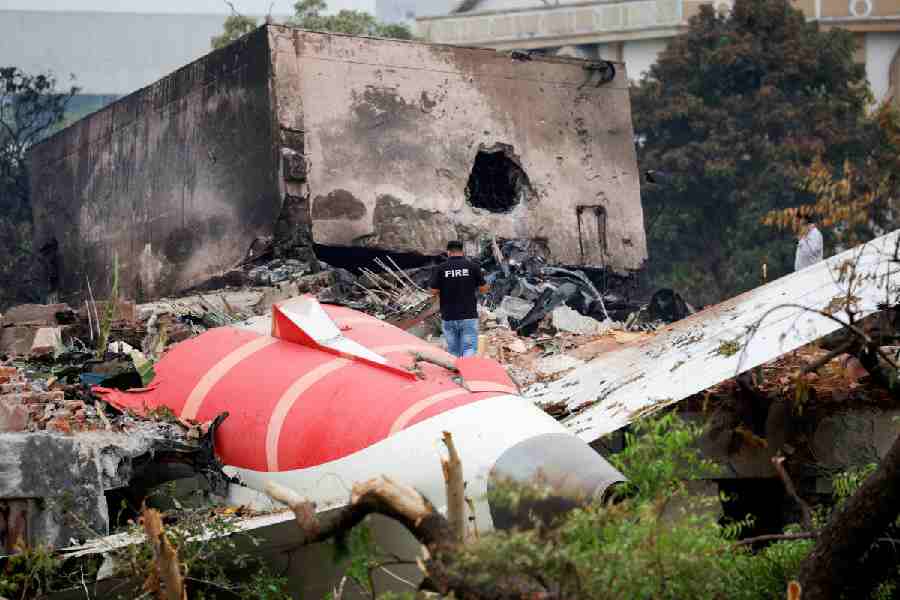 |
| Photographs of Darjeeling in 1950 after a major landslide hit the hill town. A damaged building (below) that could not be identified |
 |
Darjeeling, Nov. 21: In 1968, a torrential rainfall had unleashed about 20,000 landslides, killing thousands and breaching the Darjeeling-Sikkim road at more than 90 places. Forty years down the lane, the chances of a similar calamity loom large.
Experts today warned that this time the devastation would be swifter and more fatal if long term preparedness continued to be ignored.
Leszek Starkel, a professor of Polish Academy of Sciences who has been studying landslides in this part of the country for the past 40 years, said: “I had first come to Darjeeling to study the evolution of mountains in 1968. I was amazed with the destruction. The region had received 1000mm of rainfall in 52 hours, which is equivalent to two years of rainfall in Poland.”
Speaking on the sidelines of Landslide Hazard Workshop, organised by a group of residents under the banner of Save the Hills, Starkel said there was a possibility of a rerun of such an incident because of the current building boom.
“In the past century, the region had witnessed three extreme periods. There is every chance of they being repeated and this time the devastation would be fatal and would largely be concentrated in the urban areas. There would be chaos if these slides are triggered by earthquakes during rainy seasons.” Urging the government to take immediate steps, Starkel said the state should focus on preparing for such calamities.
“Coal quarries in areas like Tindharia must be stopped immediately. Afforestation must be taken up on a war footing and construction (of buildings) on steep slopes must stop,” he said.
Praful Rao, the president of Save the Hills, alleged that the government was indifferent. “We only talk but nothing comes from the government. I have attended two seminars of the National Disaster Management Authority at Shillong and Calcutta but nothing concrete had taken place. We will now act as a pressure group to save the hills,” said Rao.
He has filed an RTI to seek information on government initiatives taken in the past five years to prevent landslides in the region.
Varun Joshi, the head of the disaster management faculty of GB Pant Institute of Himalayan Environment and Development (Sikkim unit), talked about the measures taken in the hill state.
“By planting vegetation in the landslide-prone area, a first line of defence has been created. Social measures includes the banning of cattle grazing in these spots,” he said. Joshi suggested rock bolting (holding rocks with bolts) techniques to stop landslides in mountainous region and construction of “riprap drains” (cut into steps) to control the flow of gushing water.
“Even broom plant and cardamom cultivation should be encouraged as these plants have deep roots,” said Joshi.
However, previous studies conducted by the Netaji Institute of Asian Studies in 2001 had cited that excessive cultivation of crops with deep roots like broom and cardamom should be discouraged as it increases erosion in the hills where there is not much soil deposition.
Conflicting opinions among experts only underlined the need to have a proper and thorough survey on landslides in the region.










